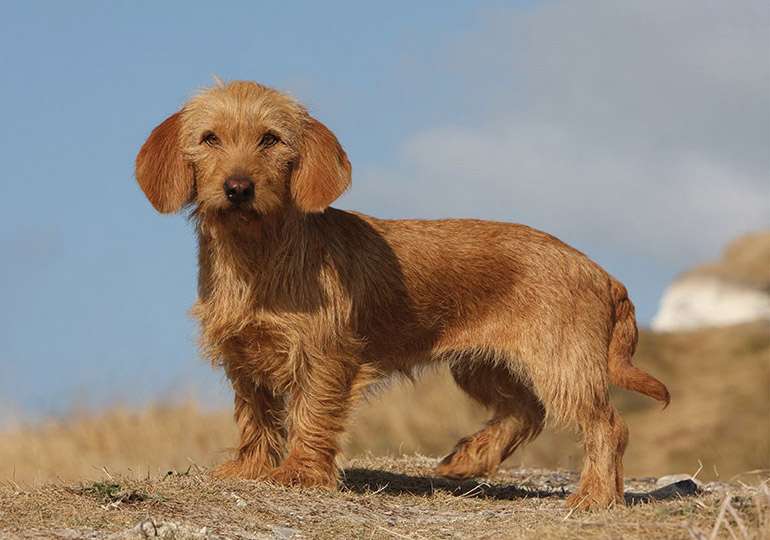
Description
The Rat Terrier is a smooth-coated, compact, and robust exterminator dog that is an American original. Teddy Roosevelt is credited with creating the breed name. RTs are jovial, playful, and portable companions that come in two size variations. Rat Terriers have a balanced, compact build that makes them robust but fashionable. There are two categories for sizes: Miniatures have shoulders that range from 10 to 13 inches, whereas standards can reach heights of 18 inches. The lustrous, silky coat is available in numerous pied patterns.
Origin/History
The rat terrier is an American breed that was created by mating various terriers, including the fox terrier, bull terrier, Manchester terrier, and old English white terrier. They were initially bred to catch prey and hunt pests, like rats, on farms, which is how they earned their name.
Breeders of rat terriers attempted to spread specific traits throughout the 1910s and 1920s, creating a number of new lines in the breed as a result. To create swift canines that could aid in jackrabbit population control, whippets and Italian greyhounds were crossed with rat terriers in the Midwest. They were crossed with beagles in Central and Southwest America to enhance their hunting abilities and produce more pack-oriented canines. In the 1920s, rat terriers were crossed with toy fox terriers that were too big for their breeding programmes, giving rise to toy-sized, or miniature, rat terriers.
When farmers started using poison to control pests and rodents in the 1940s and 1950s, the rat terrier’s population started to decline. The breed was once prevalent on American farms. Prior to the breed’s resurgence in the 1970s, just a few breeders kept it alive.
Temperament
Rat terriers can be kind, affectionate, and devoted to their family members despite the fact that they are natural hunters and make good watchdogs. They can also be friendly to strangers and other medium-sized to larger pets with the right training and socialization.

Care
Rat terriers require little maintenance when it comes to grooming, but they require a lot of attention when it comes to training and exercise. It shouldn’t come as a surprise that this working dog is very spirited and requires a lot of exercise every day, which makes him a great choice for families with active children. Given their tendency for digging, rat terriers should also have a specific digging area in the backyard.
Exercise
The rat terrier has a high level of energy and demands a lot of exercise because it was bred to be a working and hunting dog. Your rat terrier should get at least 40 minutes of exercise every day, ideally in a fenced-in area with space to run around. Make sure the fence is 5 to 6 feet high because they can jump and run quickly. Due to their intense hunt drive, it is not advised to let rat terriers play off-leash in a public area. Make sure to take your rat terrier on multiple brisk walks each day if you don’t have a fenced-in space for him to run.
Grooming
As with any breed, it’s crucial to examine your rat terrier’s ears once a week for debris or indications of illness. Make an appointment with your veterinarian right once if your dog’s ears are red, inflamed, or smell funny—these could be symptoms of an injury or infection. Use a cotton cloth to gently wipe your dog’s ears if you see any waxy buildup. Cotton swabs should not be used as they can harm the sensitive inner ear components.
When it comes to taking care of your dog, dental hygiene is equally crucial. Although daily brushing is preferred, brushing your dog’s teeth at least once a week can help prevent dental and oral problems. In moderation, dental treats are acceptable, but they shouldn’t be the only way to take care of your teeth.
To remove loose hair and debris, you should only brush your rat terrier once a week using a rubber mitt or soft brush. You can bathe your dog whenever you need to because of their extremely short, thick, and smooth coats. It’s vital to remember that this breed sheds more heavily in the autumn, spring, and during periods of heat.
Training
The rat terrier is incredibly bright and may be very stubborn, like many other terriers. Additionally, this breed is prone to destructive behavior when bored or unstimulated. Although training and obedience can be difficult, they are essential for socialization and good behavior. By including games and rewards, you may keep training engaging for your rat and keep him or her interested. Try a different approach if your rat terrier becomes sidetracked or you feel that your training tactics aren’t working.
Diet and Nutrition
The diet of your rat terrier will mostly rely on her size, age, and amount of activity, but you may anticipate feeding her between.25 cups of high-protein, premium dog food should be given daily to dogs under 10 pounds, and 2 cups should be given to canines weighing between 30 and 40 pounds.
Recall to offer treats sparingly. Obesity, diabetes, and canine heart disease are just a few of the harmful health concerns that can result from overeating.
Table





